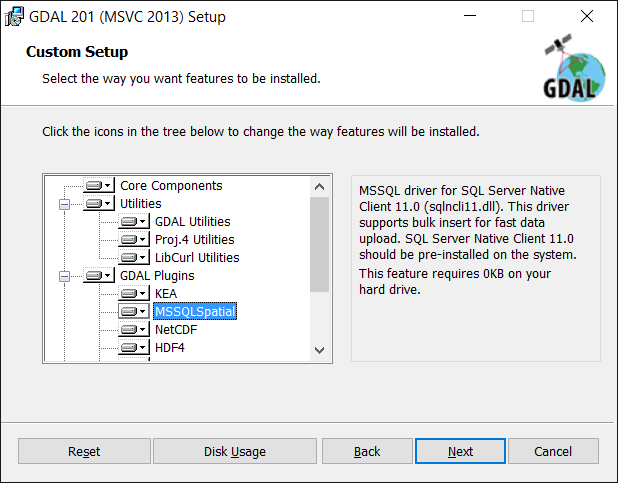-->
- What Is Sql Server Native Client
- Download Sql Server Native Client 11
- Sqlncli
- Download Sql Server Native Client 10
- Download Sql Server Native Client
The SQL Server Native Client 10.0 ODBC Driver was released with SQL Server 2008 and can access SQL Servers from 7.0 and above. Programs that are written using the SQL Native Client ODBC driver communicate with SQL Server through function calls.
Microsoft SQL Server Native Client 11.0 is installed when you install SQL Server 2016 (13.x).

There is no SQL Server 2016 Native Client. For more information, see SQL Server Native Client.
You can also get sqlncli.msi from the SQL Server 2012 Feature Pack web page. To download the most recent version of the SQL Server Native Client, go to Microsoft速 SQL Server速 2012 Feature Pack. If a previous version of SQL Server Native Client earlier than SQL Server 2012 is also installed on the computer, SQL Server Native Client 11.0 will be installed side-by-side with the earlier version.
The SQL Server Native Client files (sqlncli11.dll, sqlnclir11.rll, and s11ch_sqlncli.chm) are installed to the following location:
%SYSTEMROOT%system32
Note
All appropriate registry settings for the SQL Server Native Client OLE DB provider and the SQL Server Native Client ODBC driver are made as part of the installation process.
The SQL Server Native Client header and library files (sqlncli.h and sqlncli11.lib) are installed in the following location:
%PROGRAMFILES%Microsoft SQL Server110SDK
In addition to installing SQL Server Native Client as part of the SQL Server installation, there is also a redistributable installation program named sqlncli.msi, which can be found on the SQL Server installation disk in the following location: %CD%Setup.
You can distribute SQL Server Native Client through sqlncli.msi. You might have to install SQL Server Native Client when you deploy an application. One way to install multiple packages in what seems to the user to be a single installation is to use chainer and bootstrapper technology. For more information, see Authoring a Custom Bootstrapper Package for Visual Studio 2005 and Adding Custom Prerequisites.
The x64 and Itanium versions of sqlncli.msi also install the 32-bit version of SQL Server Native Client. If your application targets a platform other than the one it was developed on, you can download versions of sqlncli.msi for x64, Itanium, and x86 from the Microsoft Download Center.
When you invoke sqlncli.msi, only the client components are installed by default. The client components are files that support running an application that was developed using SQL Server Native Client. To also install the SDK components, specify ADDLOCAL=All on the command line. For example:
msiexec /i sqlncli.msi ADDLOCAL=ALL APPGUID={0CC618CE-F36A-415E-84B4-FB1BFF6967E1}
Silent Install
If you use the /passive, /qn, /qb, or /qr option with msiexec, you must also specify IACCEPTSQLNCLILICENSETERMS=YES, to explicitly indicate that you accept the terms of the end user license. This option must be specified in all capital letters.
Uninstalling SQL Server Native Client
Because applications such as SQL Server server and the SQL Server tools depend on SQL Server Native Client, it is important not to uninstall SQL Server Native Client until all dependent applications are uninstalled. To provider users with a warning that your application depends on SQL Server Native Client, use the APPGUID install option in your MSI, as follows:
msiexec /i sqlncli.msi APPGUID={0CC618CE-F36A-415E-84B4-FB1BFF6967E1}
The value passed to APPGUID is your specific product code. A product code must be created when using Microsoft Installer to bundle your application setup program.
See Also
Building Applications with SQL Server Native Client
Installation How-to Topics
Does anyone know how to install the bcp.exe in SQL 2017? If in MSSQL 2012 was easy to find during to install, in MSSQL 2017 Developer Edition apparently I cannot find it. Thanks!
SQL 2012
What Is Sql Server Native Client
cdrrrcdrrrDownload Sql Server Native Client 11
1 Answer
SQL Server client tools are being decoupled from the server components in later SQL versions. This includes SSMS as well as command-line utilities. Below are some links.
